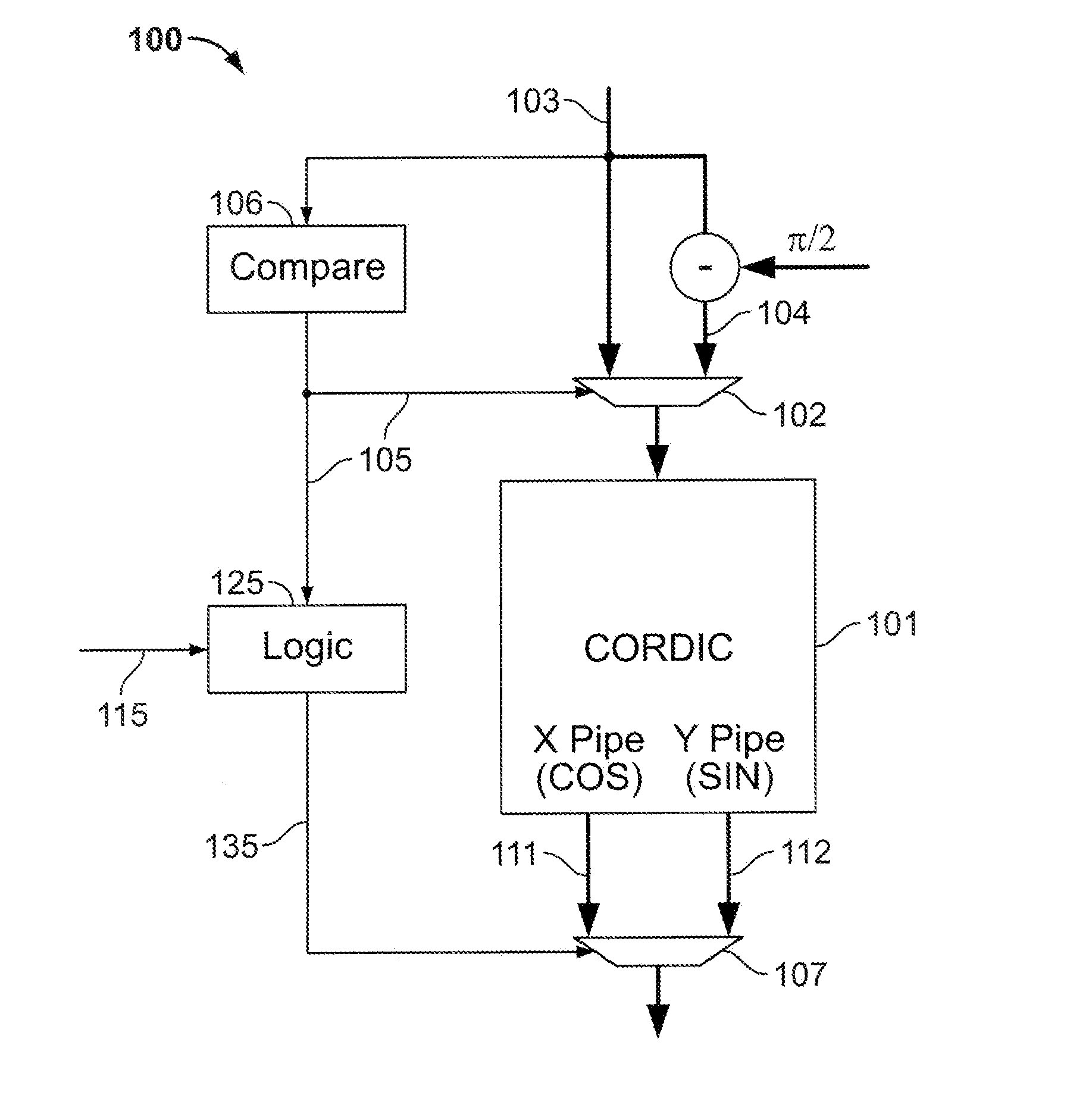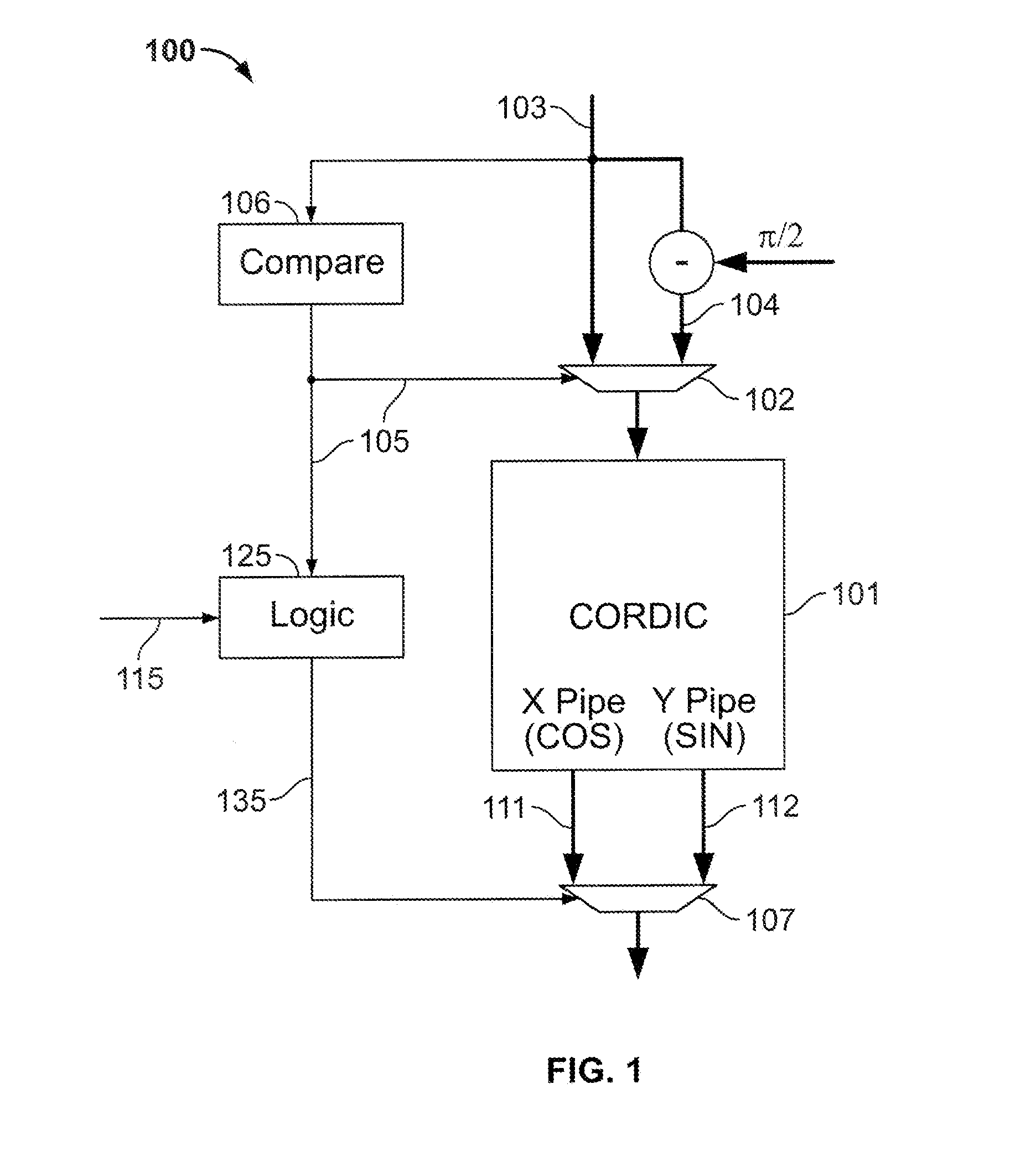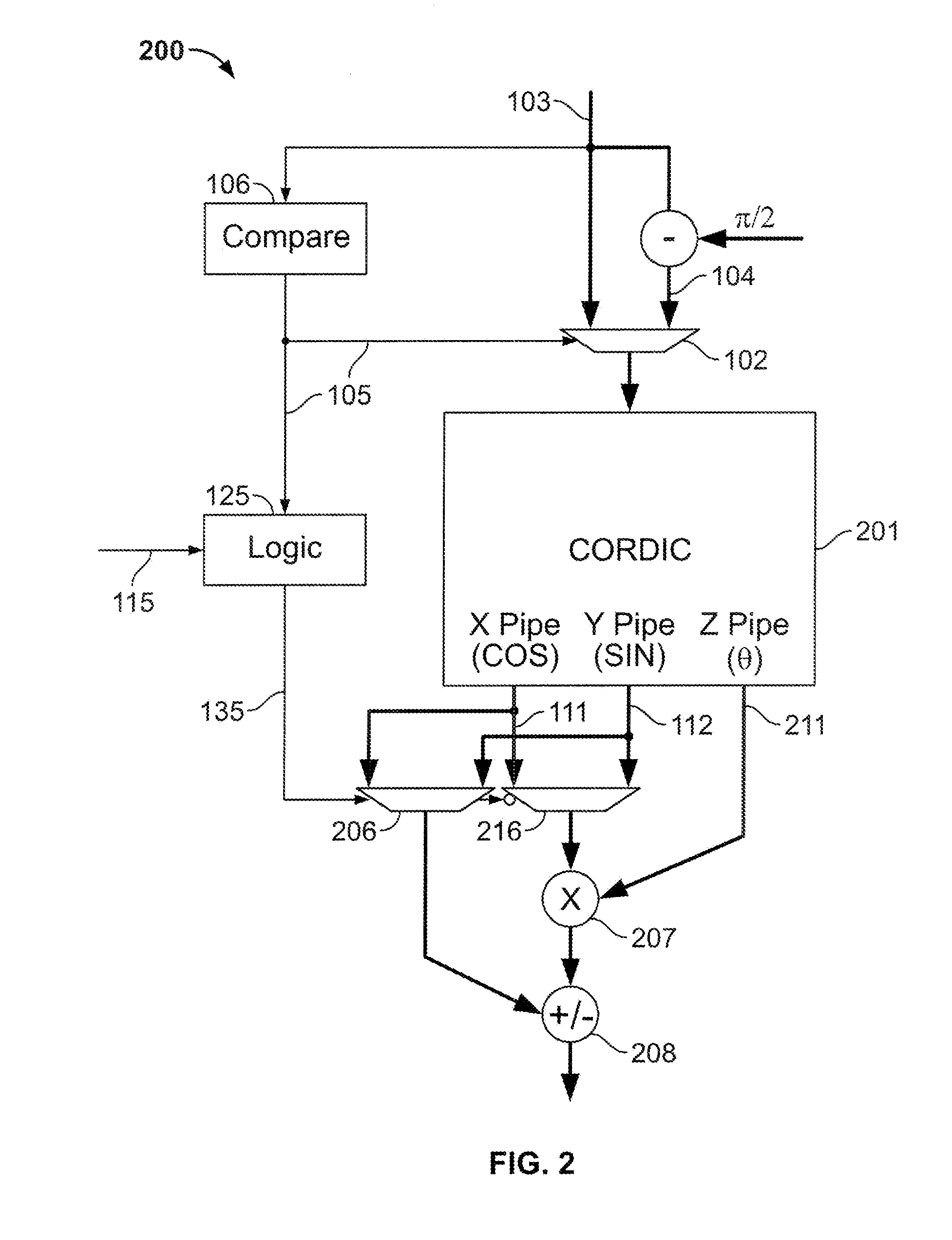Calculation of trigonometric functions in an integrated circuit device
a trigonometric function and integrated circuit technology, applied in trigometric functions, computation using denominational number representation, instruments, etc., can solve the problems of negative infinity and positive infinity of potential input range, and achieve the effect of more accurate concordance results
- Summary
- Abstract
- Description
- Claims
- Application Information
AI Technical Summary
Benefits of technology
Problems solved by technology
Method used
Image
Examples
first embodiment
[0030]A logical structure 100 of a first embodiment according to the present invention for implementing CORDIC for sine or cosine is shown in FIG. 1. Structure 100 may be implemented as circuitry. Structure 100 is built around a CORDIC engine 101 which may be any suitable CORDIC engine, including that described in copending, commonly-assigned U.S. patent application Ser. No. 12 / 722,683, filed Mar. 12, 2010, which is hereby incorporated by reference herein in its entirety. CORDIC engine 101 provides an x output 111 which generally represents the cosine of the input, as well as a y output 112 which generally represents the sine of the input.
[0031]Input multiplexer 102 selects either the input variable 103, or difference 104 between π / 2 and input variable 103. The control signal 105 for input multiplexer 102 result from a comparison 106 that which indicate(s) whether input variable 103 (θ) is greater than π / 4 or less than π / 4 (or whatever other threshold may be selected). Because input...
embodiment 100
[0047]Thus, as compared to embodiment 100 of FIG. 1, only one additional subtractor and one additional constant multiplication are needed for increased accuracy.
[0048]Alternatively, if the input is between π / 4 and 3π / 8, it also falls under embodiment 100 of FIG. 1, and it can be reflected around π / 4 by subtracting the input from π / 2, switching SIN and COS results to get the desired output. This also may be useful for implementing other types of algorithms to calculate SIN and COS values where a small input range can be used to improve the convergence rate.
[0049]A “terminated CORDIC” implementation similar to embodiment 200 of FIG. 2 can be used with embodiment 300 of FIG. 3. Such an implementation 400 is shown in FIG. 4.
[0050]In a case where signal 105 selects the direct input 408, then, as in embodiment 200, only one of the SIN / COS datapaths 401, 402 is multiplied at 411, 412 by the z datapath 403 and then, at 421, is added to or subtracted from the other of the SIN / COS datapaths 4...
embodiment 400
[0054]When implementing embodiment 400 in one of the aforementioned STRATIX® FPGAs, one of the aforementioned digital signal processing blocks, having multipliers and adders, can be used at 410 to provide multipliers 404, 405 and adder / subtractor 406. The digital signal processing blocks of such FPGAs, for example, are well-suited for performing two 36-bit-by-18-bit multiplications which may be used for this purpose. One such implementation is described at page 5-21 of the Stratix III Device Handbook, Volume 1 (ver. 2, March 2010), published by Altera Corporation, which is hereby incorporated by reference herein.
[0055]Other identity-based approaches can be used to simplify the calculations of other trigonometric functions.
[0056]For example, for tan(θ), the normalized or range-reduced input is −π / 2≦θ≦π / 2, while the output is between negative infinity and positive infinity. The following identity holds true for the tangent function:
tan(a+b)=tan(a)+tan(b)1-tan(a)×tan(b)
By judiciously b...
PUM
 Login to View More
Login to View More Abstract
Description
Claims
Application Information
 Login to View More
Login to View More - R&D
- Intellectual Property
- Life Sciences
- Materials
- Tech Scout
- Unparalleled Data Quality
- Higher Quality Content
- 60% Fewer Hallucinations
Browse by: Latest US Patents, China's latest patents, Technical Efficacy Thesaurus, Application Domain, Technology Topic, Popular Technical Reports.
© 2025 PatSnap. All rights reserved.Legal|Privacy policy|Modern Slavery Act Transparency Statement|Sitemap|About US| Contact US: help@patsnap.com



